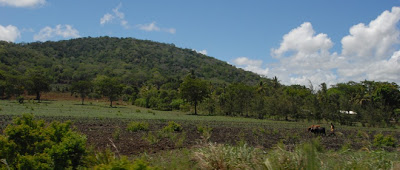15 years ago ask any typical Kenyan what minerals Kenya had and the only three minerals that popped up were soda ash, diatomite and fluorspar. Blame it on KIE syllabus and our geography teachers. Fast forward to 2012 and Turkana oil will be the first mineral that comes to mind with coal in Kitui coming a close second this time the media hype being to blame! Finally Kenya had ‘landed’ into the lucrative oil business and a possible European style industrial revolution being envisioned in the near future.
With both resources far from exploitation this might take a while and with the fragile state of political affairs vision 2030 might become a 22nd century achievement.
Since independence the Kenyan mineral industry has been dominated by non-metallic minerals with Magadi Soda, Kerio Valley Flourspar, Kariandusi Diatomite and tsavo gemstones (tsavorite) being our most notable resources. Kisii soap stone (which are pumice rocks) has also been a revenue generator in the Western Kenya County. Sculptures begun sculpting the rocks into various characters based on the famous American dysfunctional cartoon family The Simpsons and started exporting their ''Simpson soapstone'' products (Check out a story about it here ) and even more recently started a day in which people displayed their products, ingenious but simple way of marketing themselves!

Another undocumented but readily available resource is Carbon Dioxide. This might not come to mind as your basic mineral resource but it has been mined by Carbacid ltd at a mine in Keraita and they have been the major suppliers of extinguishers in the country.
Pockets of gold mines in West Kenya have been death traps for many residents in these areas but significant efforts have been taken to mine in large scale. Magadi soda is probably the only mineral, and Kenyan product that every Kenyan has used!! The salt produced from the lake has been to every Kenyan plate since it hit the markets back in the day. From Athi river mining, Bamburi Cement and East Africa Portland, these companies have taken advantage of the housing boom that has hit Kenya over the last 10 years to double their production of the enormous deposits of limestone in Athi river and the coast which account to 4% of world production. Tiomin Resources Inc. of Canada has planned to produce 330,000 t/yr of ilmenite, 75,000 t/yr of zircon at Kwale.Why are these minerals important? Because they are used in almost every electronic we use meaning demand over the years has pushed their prices even higher. Also in the same category is the mineral pyrochlore found in Mrima Hill also near the coast.

Mrima Hill (pics from mrimahill.com )
The pyrochlore has economic amounts of niobium but with the small amounts of radioactivity from the hill, and with its status as a forest reserve and heritage site mining is yet to begin. Of the Kenya occurrences, that of Mrima has received the most attention and is potentially of greatest importance. Its proximity to the port of Mombasa, the size of the deposit, low mining costs and presence of other commercially interesting minerals could make this one of Kenya’s most important resource (read more about it here)
This list is far from complete. We have many other minerals being explored for and others already being mined in small scale but that’s a story for another day.
GEOLOGICALLY SPEAKING!

(pictures courtesy of craftvillageuk.com)
Another undocumented but readily available resource is Carbon Dioxide. This might not come to mind as your basic mineral resource but it has been mined by Carbacid ltd at a mine in Keraita and they have been the major suppliers of extinguishers in the country.
Pockets of gold mines in West Kenya have been death traps for many residents in these areas but significant efforts have been taken to mine in large scale. Magadi soda is probably the only mineral, and Kenyan product that every Kenyan has used!! The salt produced from the lake has been to every Kenyan plate since it hit the markets back in the day. From Athi river mining, Bamburi Cement and East Africa Portland, these companies have taken advantage of the housing boom that has hit Kenya over the last 10 years to double their production of the enormous deposits of limestone in Athi river and the coast which account to 4% of world production. Tiomin Resources Inc. of Canada has planned to produce 330,000 t/yr of ilmenite, 75,000 t/yr of zircon at Kwale.Why are these minerals important? Because they are used in almost every electronic we use meaning demand over the years has pushed their prices even higher. Also in the same category is the mineral pyrochlore found in Mrima Hill also near the coast.

Mrima Hill (pics from mrimahill.com )
The pyrochlore has economic amounts of niobium but with the small amounts of radioactivity from the hill, and with its status as a forest reserve and heritage site mining is yet to begin. Of the Kenya occurrences, that of Mrima has received the most attention and is potentially of greatest importance. Its proximity to the port of Mombasa, the size of the deposit, low mining costs and presence of other commercially interesting minerals could make this one of Kenya’s most important resource (read more about it here)
This list is far from complete. We have many other minerals being explored for and others already being mined in small scale but that’s a story for another day.
GEOLOGICALLY SPEAKING!


